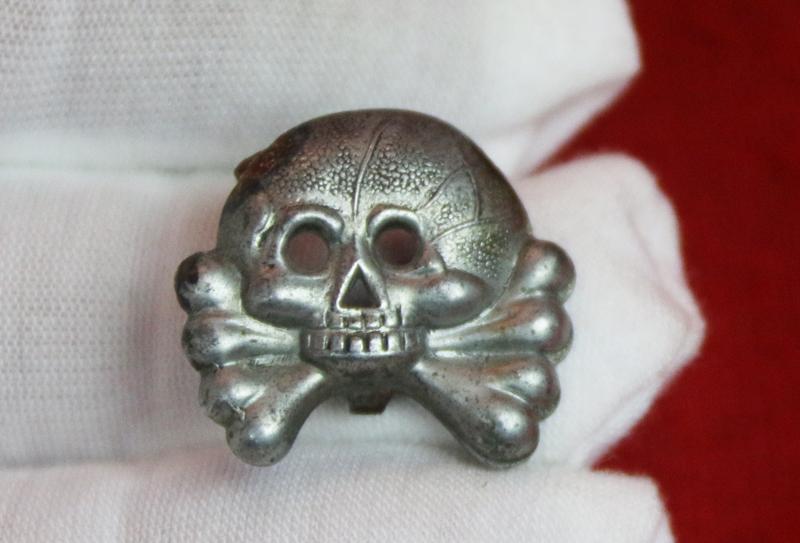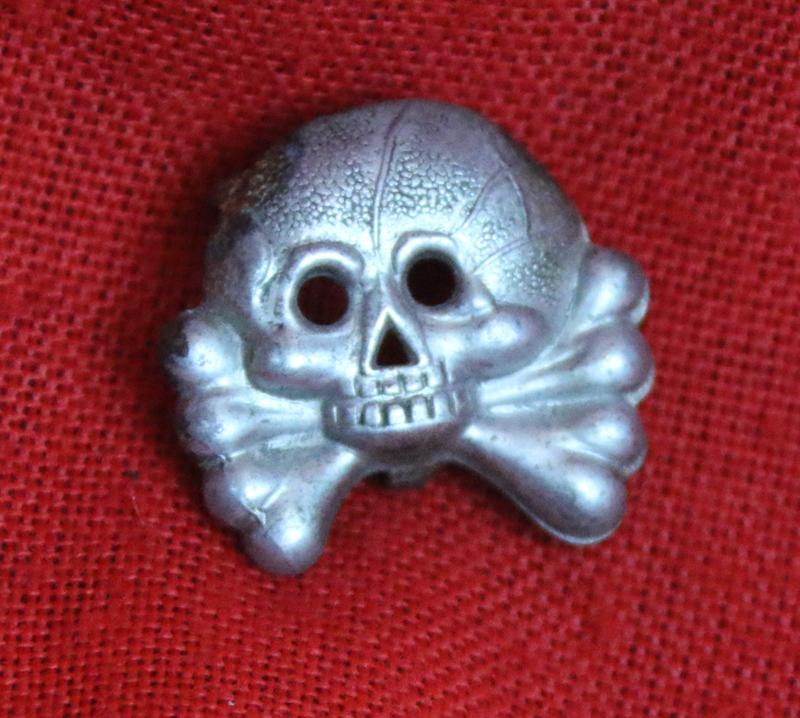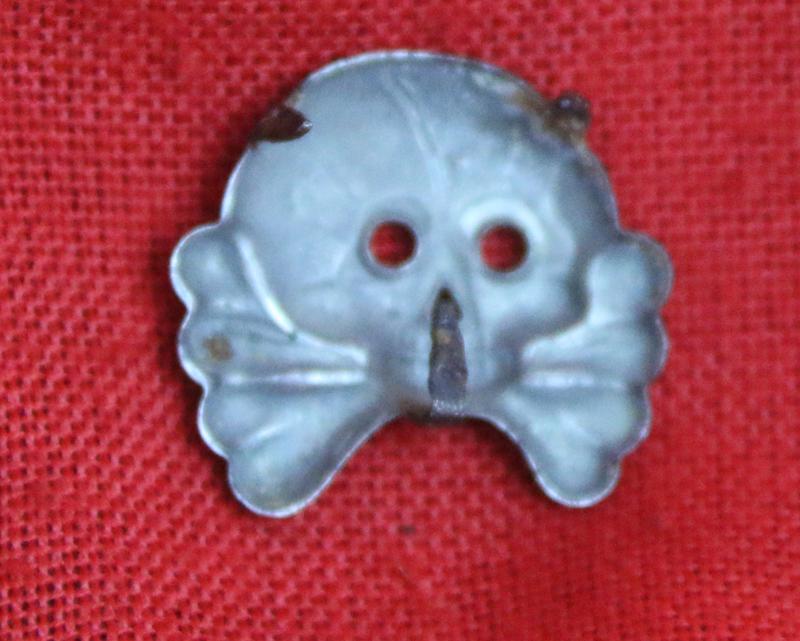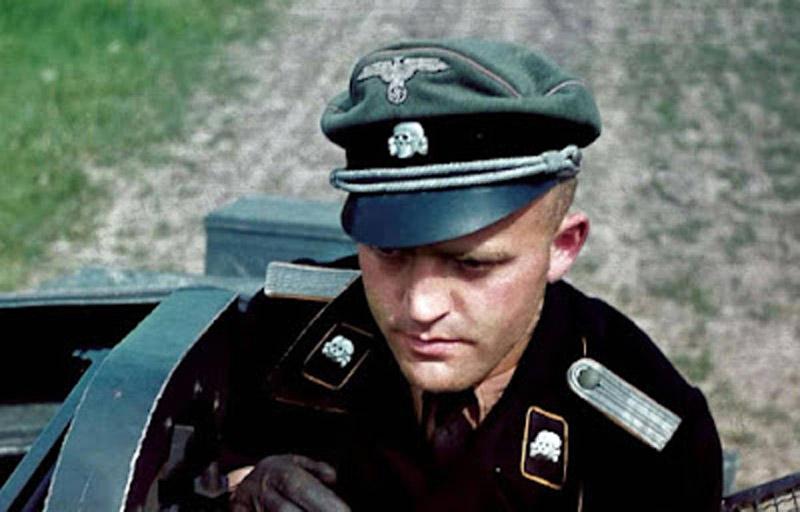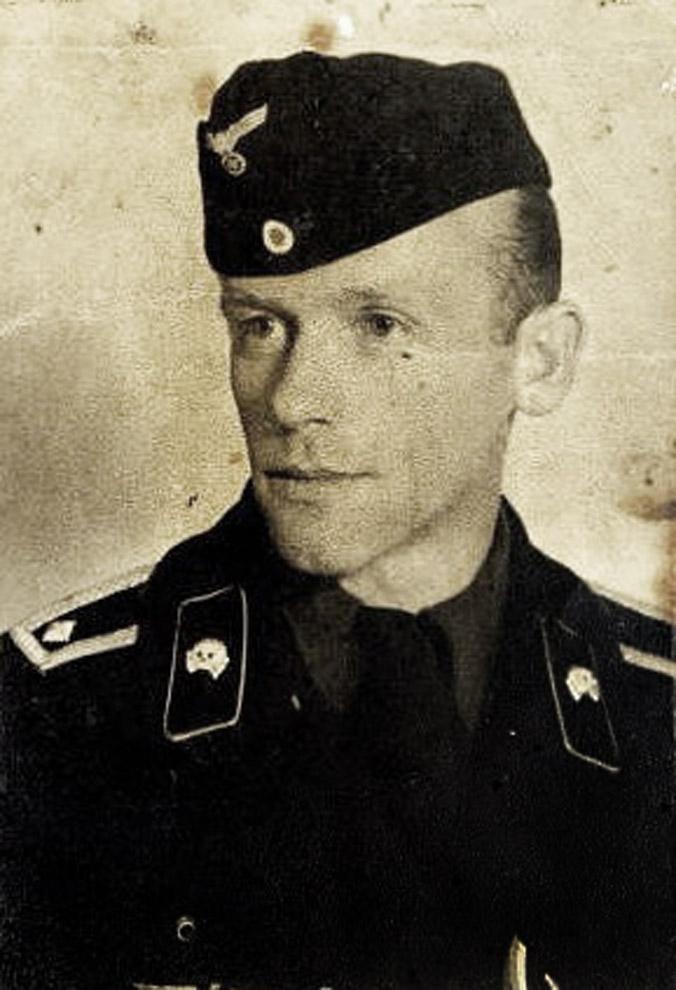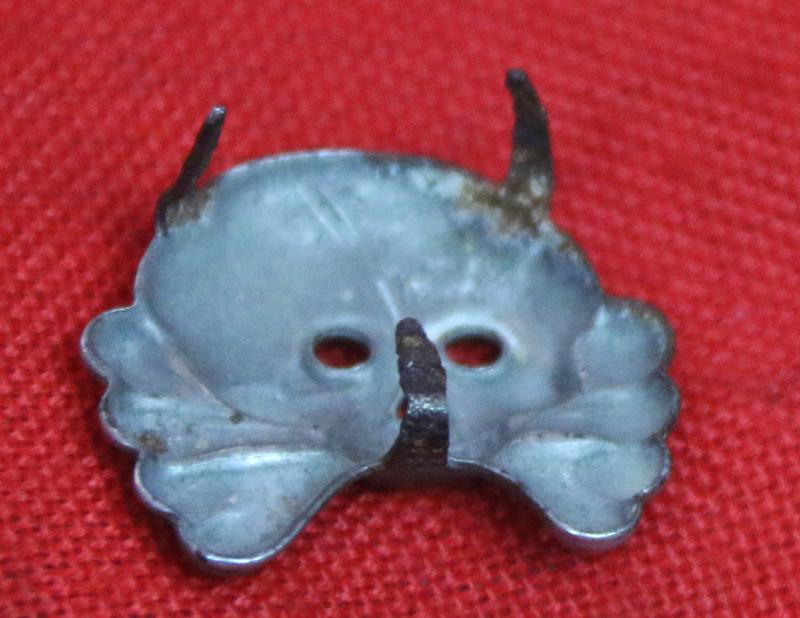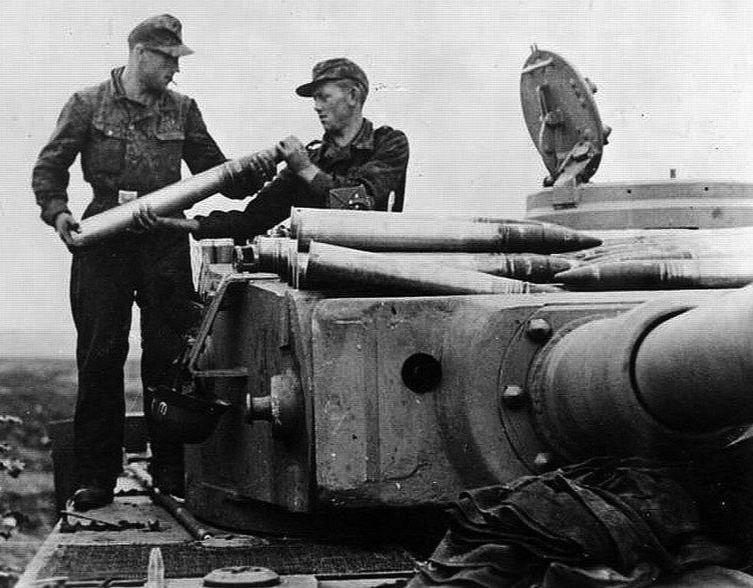A German Tombak SS/Heer Panzer Totenkopf Collar Badge, 1st Model Jawless Type
All three retaining pins intact. Panzer divisions were the key element of German success in the blitzkrieg operations of the early years of World War II. Later the Waffen-SS formed its own panzer divisions, and even the Luftwaffe fielded a panzer division: the Hermann Göring Division.
A panzer division was a combined arms formation, having both tanks (German Panzerkampfwagen, 'armored fighting vehicle', usually shortened to "Panzer"), mechanised and motorised infantry, along with artillery, anti-aircraft and other integrated support elements. At the start of the war, panzer divisions were more effective than the equivalent Allied armoured divisions due to their combined arms doctrine, even though they had fewer and generally less technically-advanced tanks. By mid-war, though German tanks had often become technically superior to Allied tanks, Allied armoured warfare and combined arms doctrines generally caught up with the Germans, and shortages reduced the combat readiness of panzer divisions. The proportions of the components of panzer divisions changed over time.
The World War II German equivalent of a mechanized infantry division is Panzergrenadierdivision ('armoured infantry division'). This is similar to a panzer division, but with a higher proportion of infantry and assault guns and fewer tanks.
The 3rd SS Panzer Division "Totenkopf" (German: 3. SS-Panzerdivision "Totenkopf") was an elite division of the Waffen-SS of Nazi Germany during World War II, formed from the Standarten of the SS-TV. Its name, Totenkopf, is German for "death's head" – the skull and crossbones symbol – and it is thus sometimes referred to as the Death's Head Division.
The division was formed through the expansion of Kampfgruppe Eicke, a battle group named – in keeping with German military practice – after its commander, Theodor Eicke. Most of the battle group's personnel had been transferred to the Waffen SS from concentration camp guard units, which were known collectively as SS-Totenkopfverbände; others were former members of Selbstschutz: ethnic German militias that had committed war crimes in Poland.
24mm across.
Code: 24296

